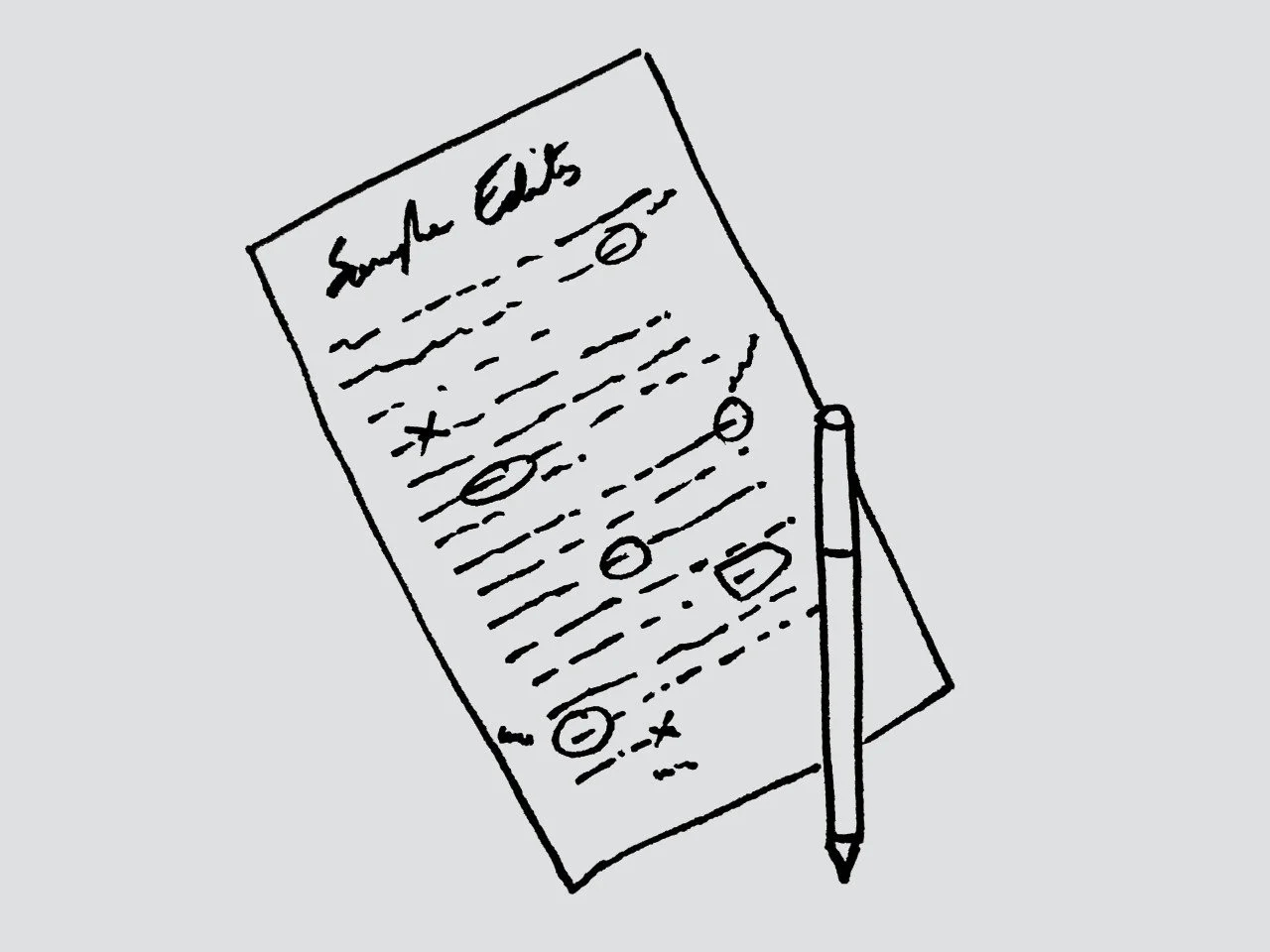Sample Edits
What is a sample edit and why should you get one?
Finding the right editor can be tricky. While, hopefully, all editors are skilled in identifying and fixing grammatical errors, each will have their own idiosyncrasies and unique style of feedback. Requesting sample edits can help you find the editor that is the right fit for you.
What is a sample edit?
A sample edit is when an author sends a small section of their manuscript for editing prior to hiring the editor for the full copyediting or proofreading job. Sample edits benefit both authors and editors. Authors can use sample edits to make sure they are happy with the quality of editing and style of feedback before committing to the full edit. Similarly, sample edits allow editors to see if their expertise is a good match for the project. Editors will also gain a clearer understanding of the level of editing required and be able to create an accurate quote. Clear communication is vital to successful and productive author–editor relationships, and sample edits provide the perfect opportunity to establish this.
How long should a sample edit be?
The length of a sample edit depends on the editor as well as the length of the overall manuscript. Generally, at Rafaela Novelli Editing, a sample edit will cover 1000 words of a book manuscript (anything above 50,000 words) and 500 words of a novella or shorter piece (5,000–50,000 words). Unfortunately, a sample edit is not available on anything smaller, such as a 1,000-word short story. In this case, the editor will request to view the whole story when preparing a quote. Authors can then ask for a description of the editor’s style or to view a pre-prepared sample of their editing that was completed on someone else’s work.
When is a sample edit not useful?
Sample edits are fantastic for when authors are looking for copyediting or proofreading services but are not useful for structural editing or manuscript assessments. This is because structural edits and assessments deal with the book as a whole – picking up issues in the structure, plot, setting, characterisation, themes, and tone – which cannot be accurately achieved in a small sample. In contrast, copyediting and proofreading deal with issues at a paragraph, sentence and word level, which can be accurately achieved in a small sample. If an author is looking for a structural edit or manuscript assessment, it is important for the editor and author to establish clear communication, ask questions and set clear expectations during the quoting process.
5 tips for requesting sample edits:
When approaching and comparing various editors, send them all the same section to edit. This allows you to easily compare their different styles, what they pick up on, feedback, etc.
Send a section of your document that is a realistic sample of your writing and the level of editing required. Some editors will ask for a sample from the middle of your manuscript for this reason, as the beginning is generally more polished.
Use the sample editing process to discuss the style of editing you require and your preferences. For example, do you prefer more feedback and tips on fixing grammar or just want all the errors corrected without the need for explanation?
Use the sample edit to make sure you are comfortable with the method of editing and technology being used, such as Track Changes in Microsoft Word. Most editors will have their preferred method but will also adapt to your preferences.
Check if there is a charge for the sample edit. At Rafaela Novelli Editing Services, sample edits are currently free. However, other editors may charge a small fee for this service. Make sure to work this into your budget if you plan to shop around. This will be money well spent when you find the perfect editor for you.
To take up the offer of a FREE sample edit from Rafaela Novelli Editing Services, click here.

